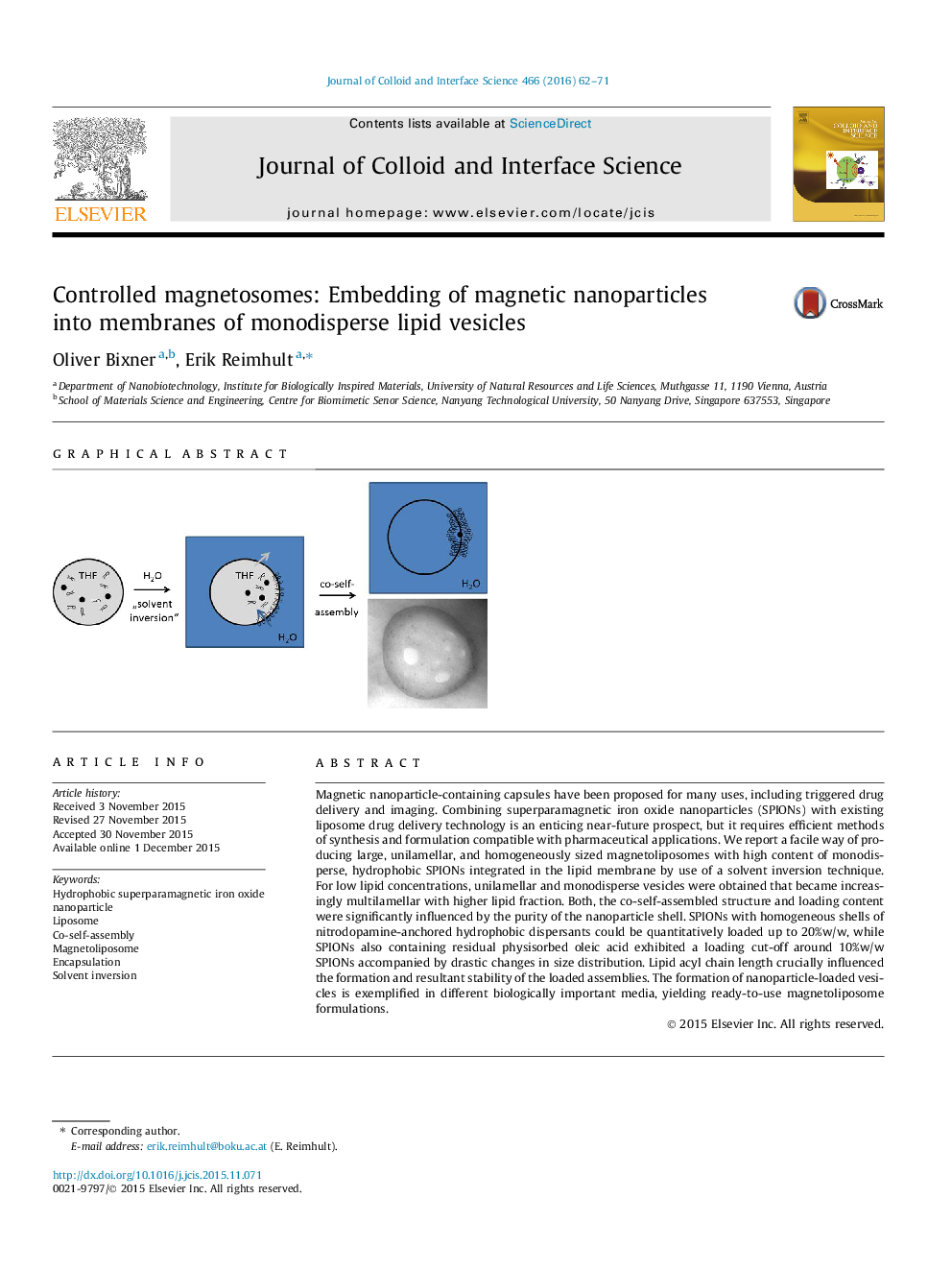| Article ID | Journal | Published Year | Pages | File Type |
|---|---|---|---|---|
| 606336 | Journal of Colloid and Interface Science | 2016 | 10 Pages |
Magnetic nanoparticle-containing capsules have been proposed for many uses, including triggered drug delivery and imaging. Combining superparamagnetic iron oxide nanoparticles (SPIONs) with existing liposome drug delivery technology is an enticing near-future prospect, but it requires efficient methods of synthesis and formulation compatible with pharmaceutical applications. We report a facile way of producing large, unilamellar, and homogeneously sized magnetoliposomes with high content of monodisperse, hydrophobic SPIONs integrated in the lipid membrane by use of a solvent inversion technique. For low lipid concentrations, unilamellar and monodisperse vesicles were obtained that became increasingly multilamellar with higher lipid fraction. Both, the co-self-assembled structure and loading content were significantly influenced by the purity of the nanoparticle shell. SPIONs with homogeneous shells of nitrodopamine-anchored hydrophobic dispersants could be quantitatively loaded up to 20%w/w, while SPIONs also containing residual physisorbed oleic acid exhibited a loading cut-off around 10%w/w SPIONs accompanied by drastic changes in size distribution. Lipid acyl chain length crucially influenced the formation and resultant stability of the loaded assemblies. The formation of nanoparticle-loaded vesicles is exemplified in different biologically important media, yielding ready-to-use magnetoliposome formulations.
Graphical abstractFigure optionsDownload full-size imageDownload high-quality image (102 K)Download as PowerPoint slide
